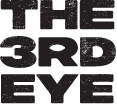October is Menopause Awareness Month

It’s October! That means a chill in the air, a pumpkin on a doorstep, and of course, a focus on Women’s Health. Today we’re turning the spotlight to Menopause Awareness which is often connected to Breast Cancer Awareness, but still not given the same level of attention or conversation.
Every October, pink ribbons and fundraising events keep breast cancer in the public eye, menopause remains one of the most under-discussed women’s health topics — especially for Hispanic women.
Spotlighting Women’s Health
Women are the gatekeepers of health decisions for their families. At THE 3RD EYE (T3E), we affectionately call them CMOs, the Chief Medical Officers of their family.
Consumers care more about health and wellness than ever, and these CMOs should have tools to take care of themselves — not just their families. Health-conscious consumers want real care that reflects medical realities of their community. And they want it reflected across every touchpoint.
The number of women who will benefit isn’t small. Nearly 1 billion women globally will experience menopause by 2025, many without adequate guidance or resources or menopause resources.
And educating one woman could also mean educating her sisters and daughters. Women drive nearly 80% of healthcare decisions for their households, making them one of the most influential consumer groups in the $6 trillion global wellness market projected to reach $11 trillion by 2034.
October is about more than pink products or campaigns that fade on November 1st. It’s about year-round commitment to women’s health needs.
Menopause Awareness: Data, Diversity, and Dismissal
Breast Cancer Awareness has strong branding in October. For years, brands and organizations have wielded the pink ribbon to increase awareness and provide education. And it worked:
Among those who have ever attended any breast cancer awareness programs who had utilized the screening were 38.5% compared to 13.3% non-attendees. (Source: BMC 2025)
So we know awareness campaigns work. That means we can do the same thing with menopause. And World Menopause Day coming up on the 18th of October, let’s talk data:
- Nearly 80% of women experience perimenopause symptoms but many don’t connect them to hormonal changes right away.
- The transition can last 4 to 8 years, beginning as early as a woman’s forties.
- 80% of women report vasomotor symptoms like hot flashes and night sweats as their most common symptoms.
- After menopause, a woman’s chance of developing metabolic syndrome rises by 38%.
- Common but overlooked symptoms include mood changes, brain fog, cognition and mood shifts, sleep changes, and muscle and joint pain.
Latinas and Menopause
As Latinas, we’re a significant portion of the population — and that’s only growing. By 2060, 1 in 3 U.S. women will be Latina. But still, our health concerns aren’t talked about enough.
Hispanic women experience menopause 1–2 years earlier than White women, with more severe menopausal symptoms like hot flashes, night sweats, and vaginal dryness. Source: T3E Focal Point Series: Menopause
When it comes to menopause, it’s simple: our community is being overlooked and underserved. And the health & wellness industry has a chance to step up.
Whether you’re a provider or wellness brand owner, menopause education should be on your radar. Especially if Hispanic women are part of the community you serve.
We have a chance to provide meaningful care and education, an opportunity to bring to light healthcare realities hidden from conversation by taboo. Menopause is a great place to start.
Why This Matters for Brands
For healthcare and wellness organizations, supporting women in menopause helps those women — but it also helps your brand.
Demographic growth means Latina women are becoming the future majority of midlife patients and consumers.
Our earlier and stronger symptom burden means more of a demand for services like menopausal hormone therapy and education about risks such as endometrial cancer. And remember, that decision-making power extends beyond latinas themselves, as hispanic women are CMOs of their family unit.
The faster you reveal and educate with intention, the stronger your chance to earn loyalty and trust in this underserved, high-growth market.
In other words: brand care is people care.
Our Perspective
At THE 3RD EYE, we take care of brands that take care of people.
Applying that same philosophy to menopause awareness, we ask brands and health organizations:
- Are your campaigns offering more than seasonal pink branding?
- Are you investing in evidence-based resources for women in menopause?
- Are you reflecting diversity in your health messaging and solutions?
Women don’t need another health and wellness campaign that talks at them. They need brands that listen, align, and act.
Closing Thoughts
October is about women’s health. But the truth is, every month should be.
Breast cancer and menopause are not seasonal talking points; they are lived realities for millions of women. And for underserved communities like latinas, they are rarely spoken realities.
The brands that rise above performative awareness and deliver consistent, culturally relevant care — whether about bone health, hormone replacement therapy, or the long-term risks of cardiovascular disease — will earn trust and ultimately shape the future of health equity.



